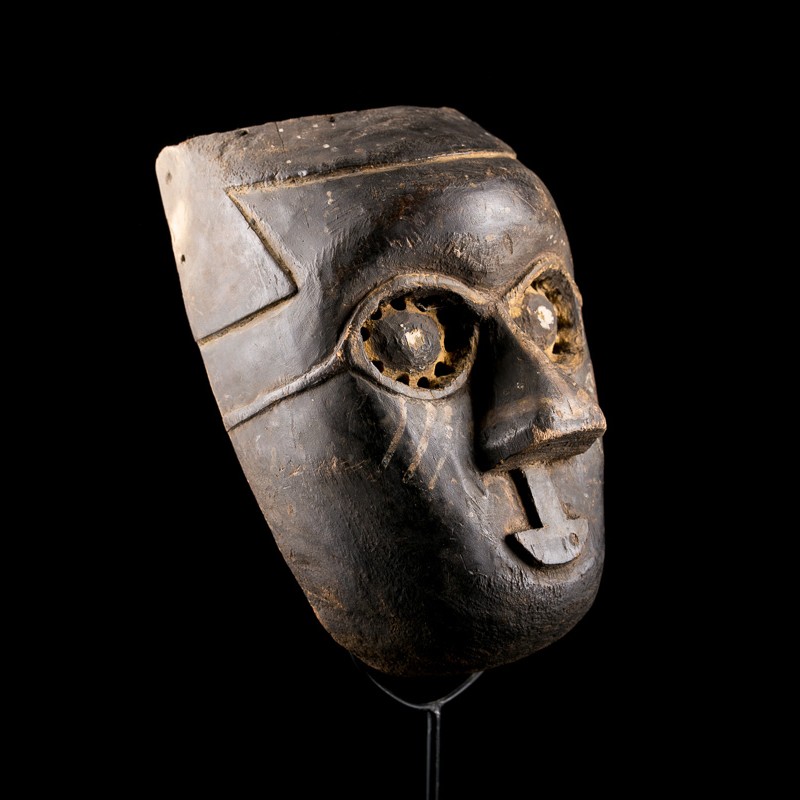







A wooden mask carved from rich, dark wood that exhibits characteristic shapes associated with the Kuba. The forehead is small and slants towards the face which is oval and frames the facial features. The eyes are circled with extensions on the side to form a form of "spectacle". The eyes themselves are large and expressive and pierced at the edges to allow the wearer to see and form a "sunburst" shape. The nose is large and wedge-shaped, below which is a small mouth under an extended philtrum. There are areas of yellow pigment on the surface forming geometric patterns.
This type of mask is known as Pwoom Itok and depicts a wise old man, who is consulted for his knowledge by other dancers during initiation ceremonies for boys. The person wearing the mask is also said to have a cane, headdress, and costume covered in cowry shells to indicate high rank. Masks are rarely used for initiation ceremonies these days, and are more used in dances that reinforce the status of royalty, or at the funeral of a chief.
Data sheet

A wooden mask carved from rich, dark wood that exhibits characteristic shapes associated with the Kuba. The forehead is small and slants towards the face which is oval and frames the facial features. The eyes are circled with extensions on the side to form a form of "spectacle". The eyes themselves are large and expressive and pierced at the edges to allow the wearer to see and form a "sunburst" shape. The nose is large and wedge-shaped, below which is a small mouth under an extended philtrum. There are areas of yellow pigment on the surface forming geometric patterns.
This type of mask is known as Pwoom Itok and depicts a wise old man, who is consulted for his knowledge by other dancers during initiation ceremonies for boys. The person wearing the mask is also said to have a cane, headdress, and costume covered in cowry shells to indicate high rank. Masks are rarely used for initiation ceremonies these days, and are more used in dances that reinforce the status of royalty, or at the funeral of a chief.